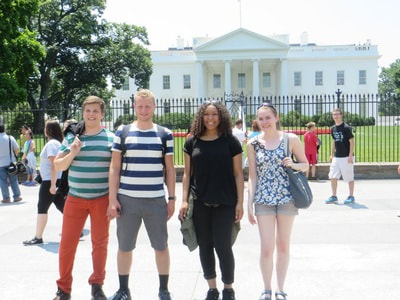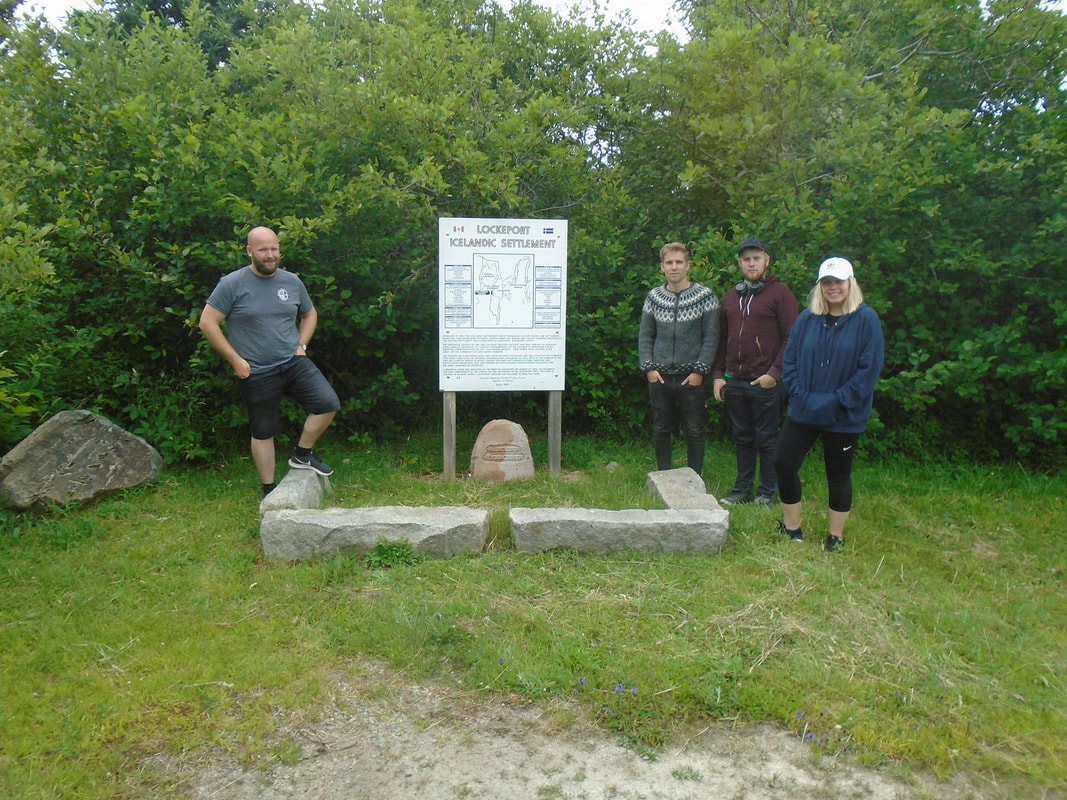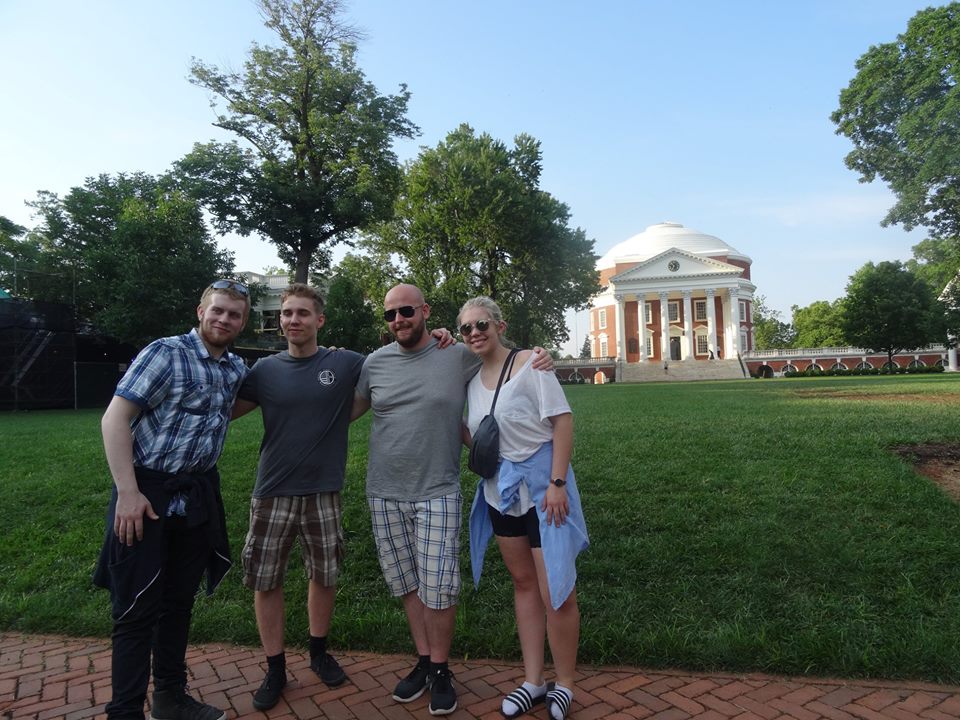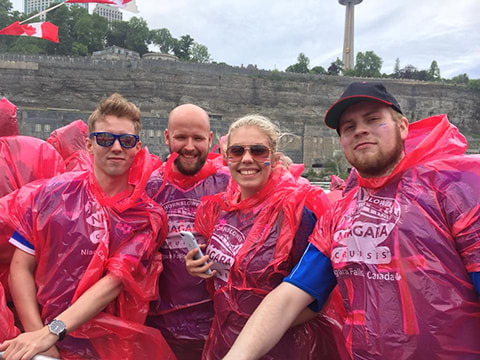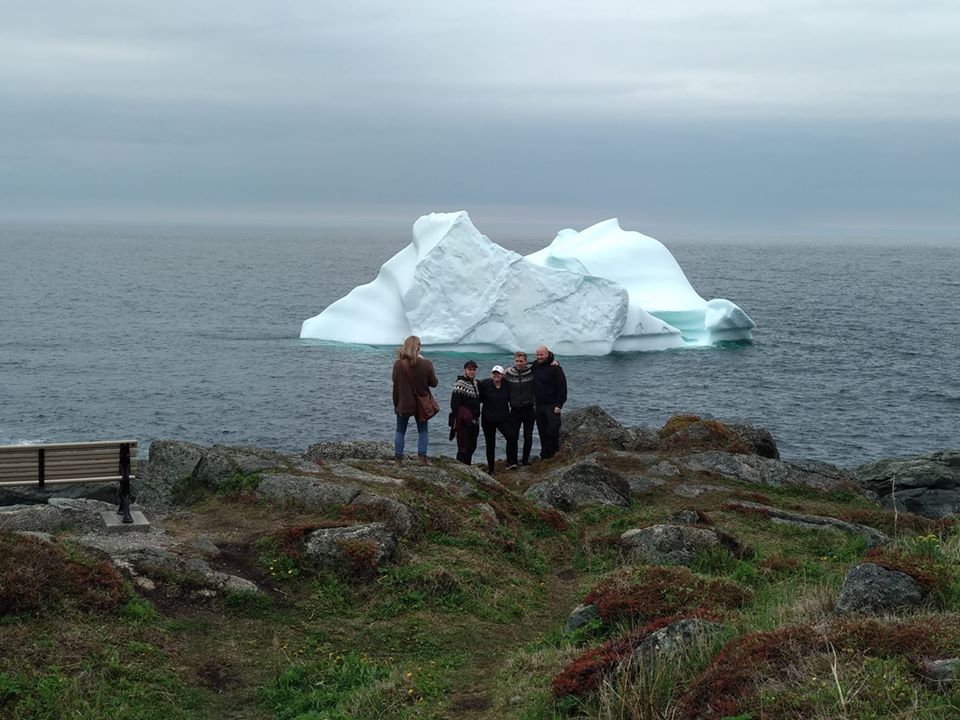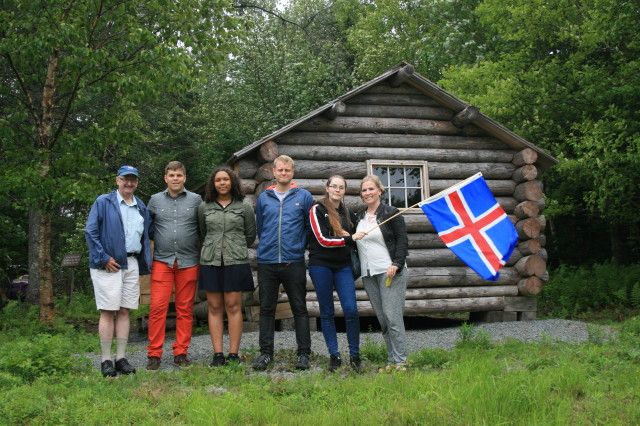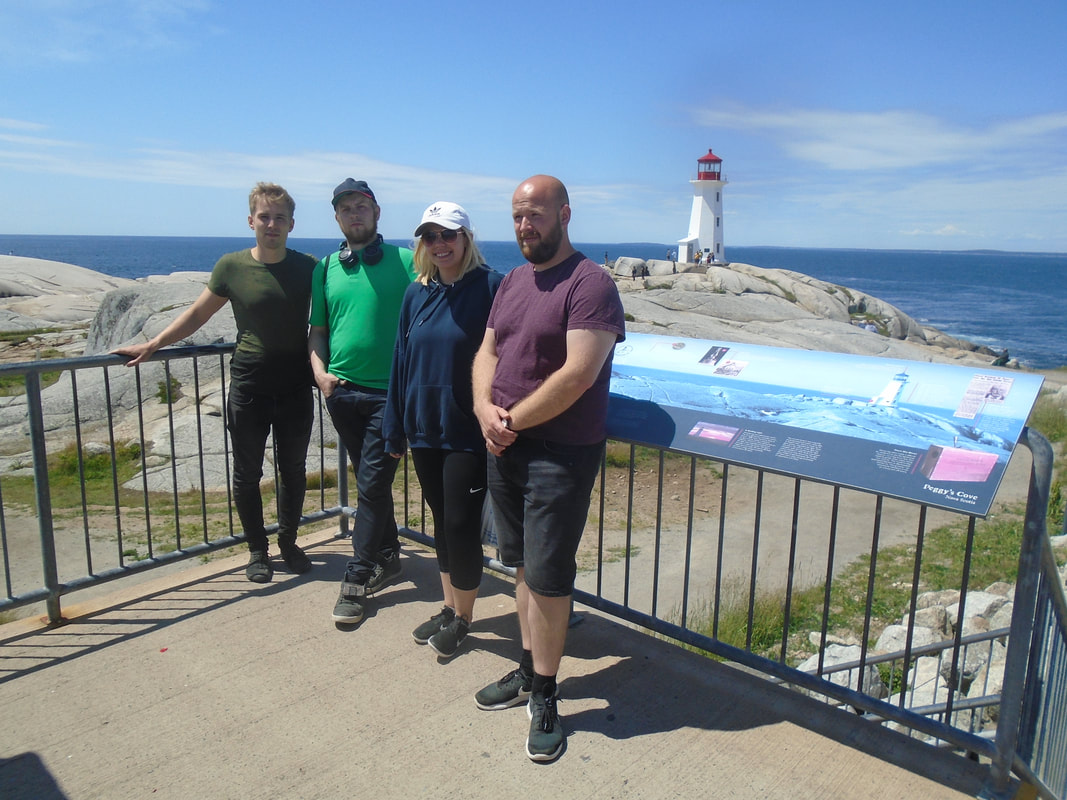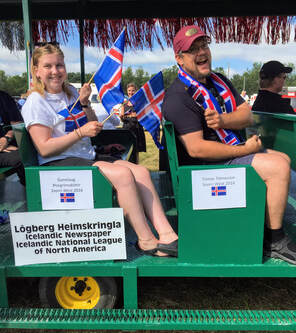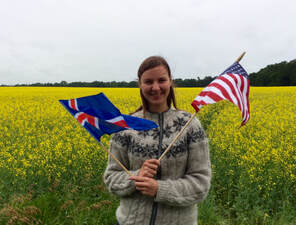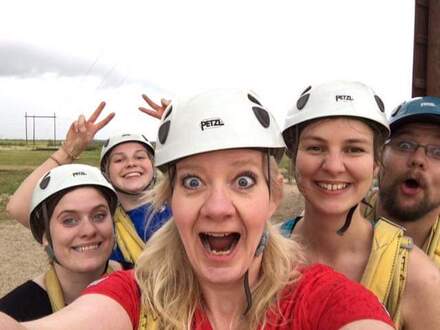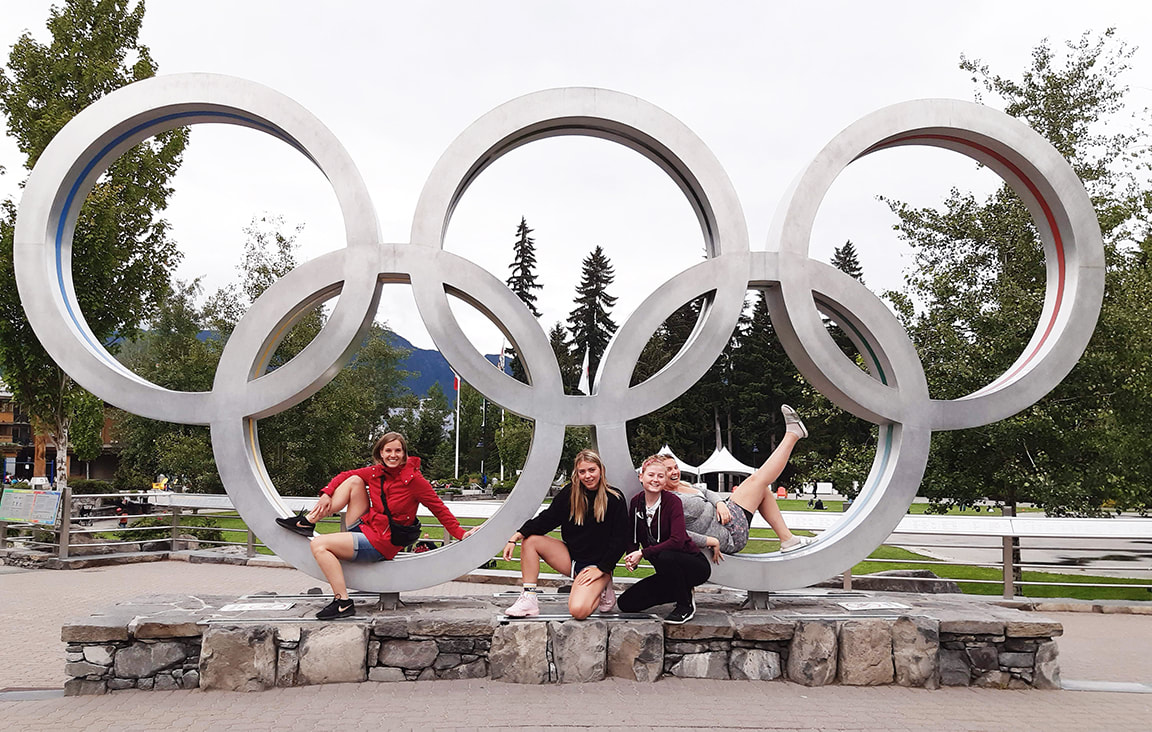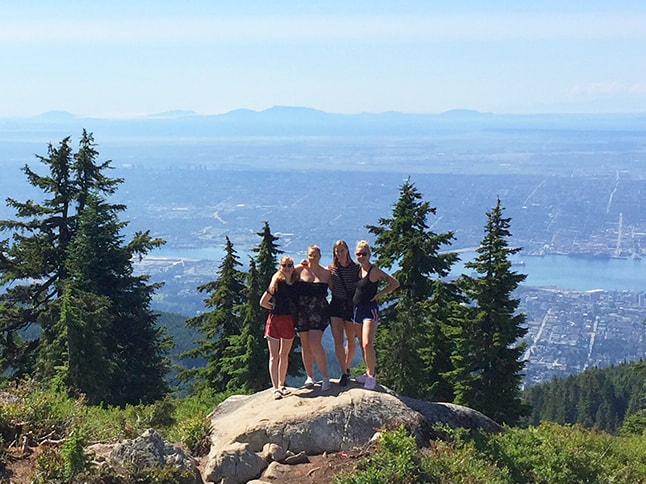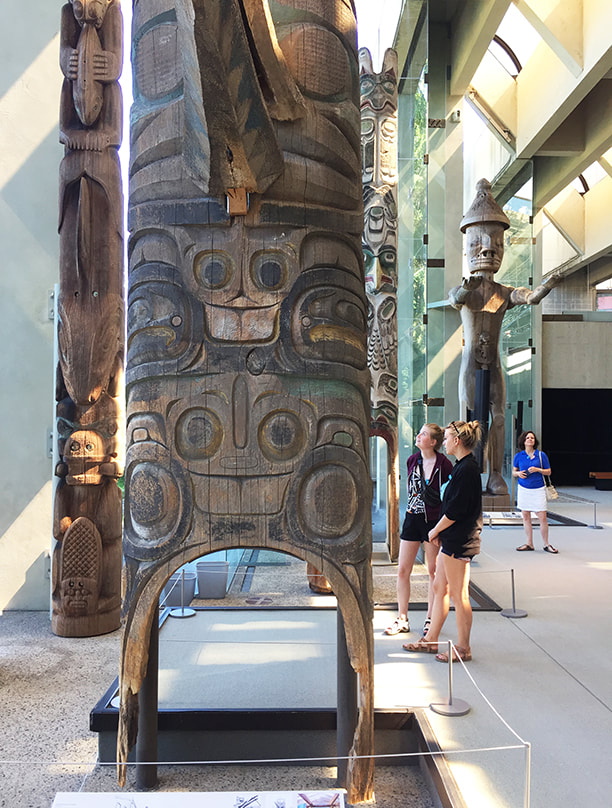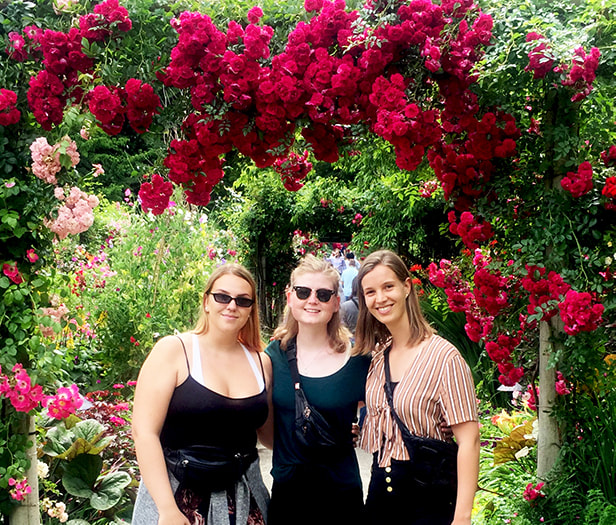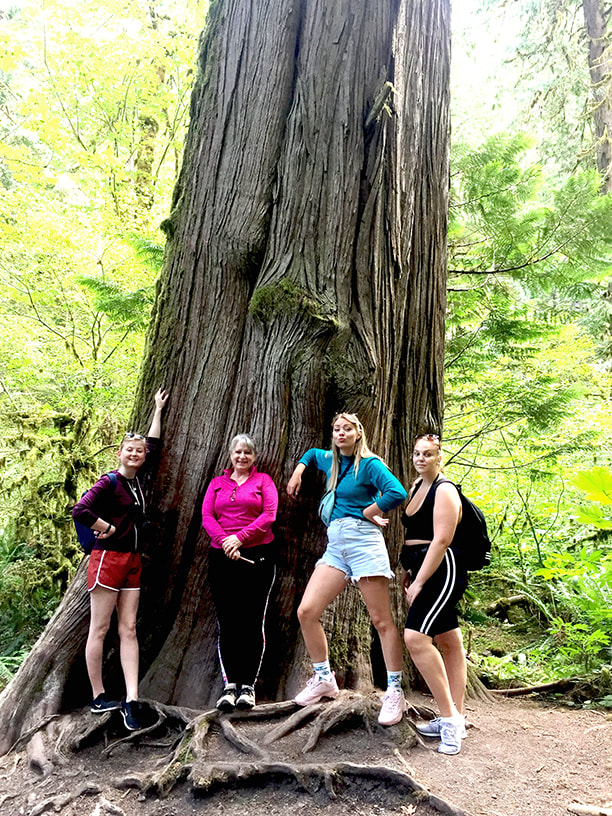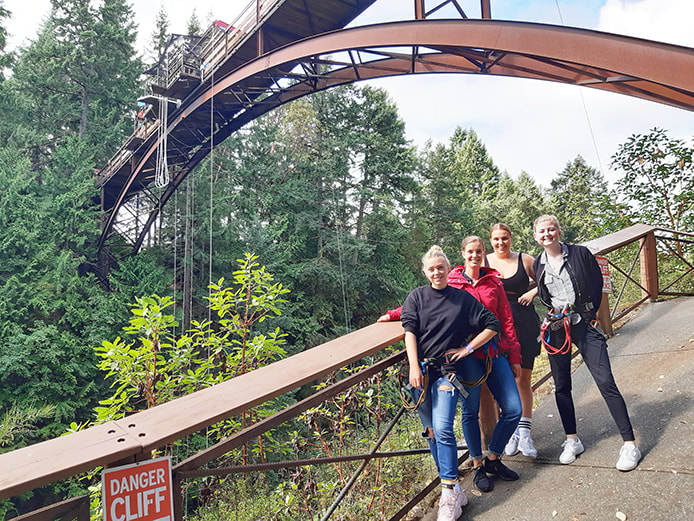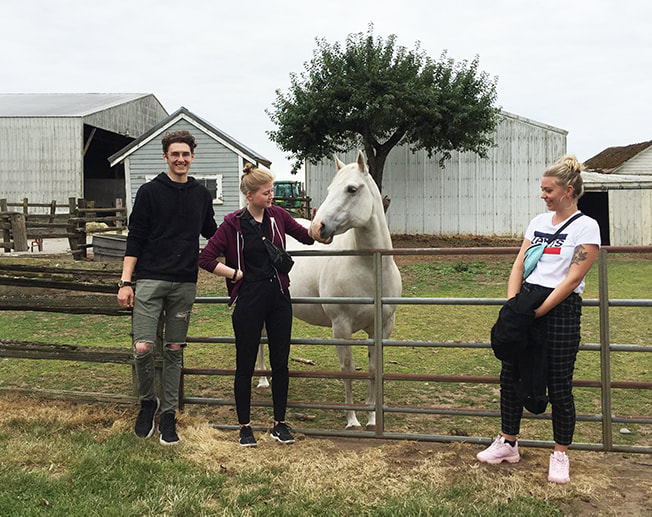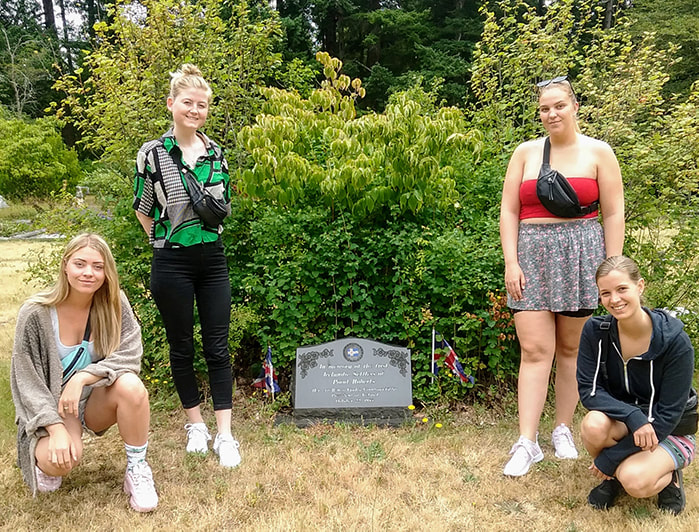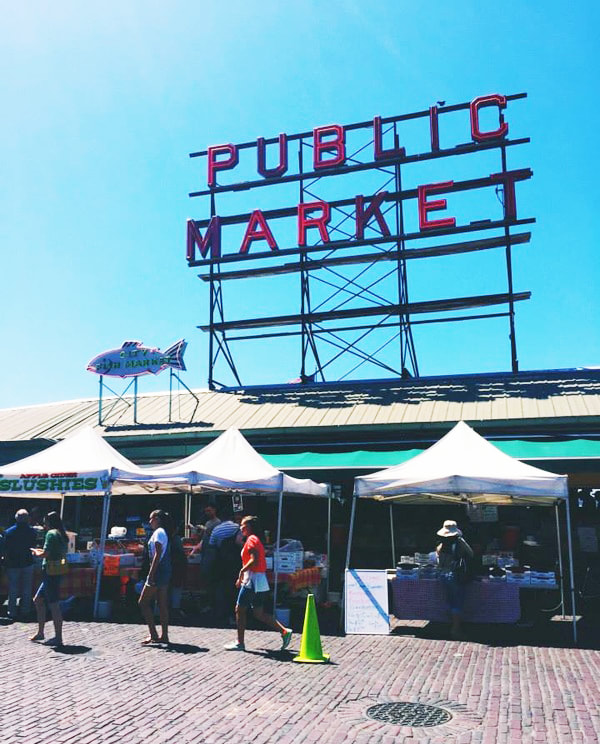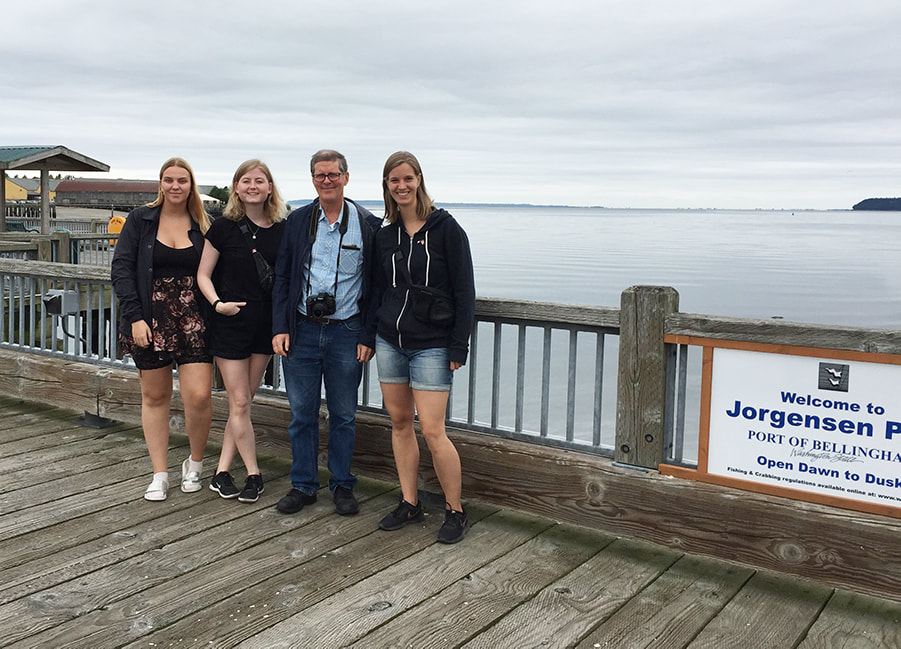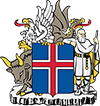Earliest Settlement of North America
Peoples occupying North America prior to the arrival of Europeans were once erroneously referred to as “indians.” The term originated in the 15th century, when Italian explorer Christopher Columbus arrived in North America and mistakenly believed he had sailed nearly around the world and arrived in the East Indies. In fact, the area of North America he explored is now known as the West Indies, and the earliest inhabitants of North America are more correctly referred to as Native Americans, Indigenous peoples, or First Nations peoples. In Canada there are three distinct groups described as First Nations, Inuit and Métis.
Archeologists and anthropologists theorize that the earliest North Americans came across a land bridge, known today as Beringia, between Eastern Asia (Siberia) and Alaska, continued through Canada and the United States, perhaps as far back as 25,000 years ago or even earlier, and migrated throughout the Western Hemisphere.
Today, there are 574 distinct Native groups (referred to as tribes, nations, bands, pueblos, communities and/or native villages) recognized by the United States government and 630 First Nations groups in Canada.
Archeologists and anthropologists theorize that the earliest North Americans came across a land bridge, known today as Beringia, between Eastern Asia (Siberia) and Alaska, continued through Canada and the United States, perhaps as far back as 25,000 years ago or even earlier, and migrated throughout the Western Hemisphere.
Today, there are 574 distinct Native groups (referred to as tribes, nations, bands, pueblos, communities and/or native villages) recognized by the United States government and 630 First Nations groups in Canada.
Icelandic Settlement in North America
Icelanders have a long connection to North America, dating back to the late 10th century AD. In fact, the Snorri Programs are named after Snorri Þorfinnsson, the first Icelander born in North America circa 1004 AD. His parents, Guðríður Þorbjarnardóttir and Þorfinnur Karlsefni, were Icelandic explorers who appear in the Grœnlendinga saga (Saga of the Greenlanders´) and Eiríks saga rauða (Saga of Eirik the Red).
The first Icelandic emigrants to North America arrived in 1854. This group of Icelanders, mostly from the Westman Islands (Vestmannaeyjar), had converted to Mormonism and emigrated to Spanish Fork, a small town in Utah Territory settled by Mormon pioneers. Another Icelandic community was established on Washington Island, Wisconsin in 1870. The bulk of Icelandic emigration, however, occurred between the late 1870s and 1914.
Life in Iceland was harsh in the mid-to-late 1800s. At the time, Iceland was part of the Kingdom of Denmark, and Denmark had largely neglected Iceland’s economy. Winters were challenging, and in January 1875, Mount Askja, a volcano in northeastern Iceland, began erupting, spewing millions of tons of debris into the air. Over the next few weeks, dozens of eruptions occurred, filling the sky with lethal smoke and ash that rained down upon settlements across Iceland. Iceland’s agriculture could no longer support its approximately 76,000 inhabitants, and an estimated 25% of the population emigrated.
Immigrants arriving in North America in the mid-1870s could choose where to settle. A small number joined friends and relatives in the United States (Wisconsin, Minnesota, and Nebraska) and Canada (Nova Scotia). Many were lured to the United States by the promise of free land offered by the Homestead Act of 1862: 160 acres to those who could “improve” it by building a dwelling and cultivating the land.
The Markland settlement in Nova Scotia was established in 1872, and in the autumn of 1874, a group of 352 Icelanders arrived in Toronto and travelled to Kinmount, Ontario to work on the railroad. Following a very hard winter filled with hunger and disease, those who survived into spring 1875 moved on to Gimli, Manitoba in search of a better life. This community on the shores of Lake Winnipeg became known as “New Iceland.” 1875 was a landmark year in Icelandic emigration history, as another important settlement was established: Minneota, Minnesota, located in Lyon and Lincoln Counties.
In the 2000 United States Census, the most recent for which this data is available, 42,716 people indicated having Icelandic ancestry, with the largest concentrations in California, Washington state, and Minnesota.
According to the 2016 Canadian census, Canada is home to the largest number of Icelanders outside of Iceland, with some 101,795 people identifying as being of Icelandic descent. The largest concentrations are in Manitoba, British Columbia, and Alberta.
See https://www.icelandicroots.com/emigration-whereto for more information on early Icelandic settlements in North America.
The first Icelandic emigrants to North America arrived in 1854. This group of Icelanders, mostly from the Westman Islands (Vestmannaeyjar), had converted to Mormonism and emigrated to Spanish Fork, a small town in Utah Territory settled by Mormon pioneers. Another Icelandic community was established on Washington Island, Wisconsin in 1870. The bulk of Icelandic emigration, however, occurred between the late 1870s and 1914.
Life in Iceland was harsh in the mid-to-late 1800s. At the time, Iceland was part of the Kingdom of Denmark, and Denmark had largely neglected Iceland’s economy. Winters were challenging, and in January 1875, Mount Askja, a volcano in northeastern Iceland, began erupting, spewing millions of tons of debris into the air. Over the next few weeks, dozens of eruptions occurred, filling the sky with lethal smoke and ash that rained down upon settlements across Iceland. Iceland’s agriculture could no longer support its approximately 76,000 inhabitants, and an estimated 25% of the population emigrated.
Immigrants arriving in North America in the mid-1870s could choose where to settle. A small number joined friends and relatives in the United States (Wisconsin, Minnesota, and Nebraska) and Canada (Nova Scotia). Many were lured to the United States by the promise of free land offered by the Homestead Act of 1862: 160 acres to those who could “improve” it by building a dwelling and cultivating the land.
The Markland settlement in Nova Scotia was established in 1872, and in the autumn of 1874, a group of 352 Icelanders arrived in Toronto and travelled to Kinmount, Ontario to work on the railroad. Following a very hard winter filled with hunger and disease, those who survived into spring 1875 moved on to Gimli, Manitoba in search of a better life. This community on the shores of Lake Winnipeg became known as “New Iceland.” 1875 was a landmark year in Icelandic emigration history, as another important settlement was established: Minneota, Minnesota, located in Lyon and Lincoln Counties.
In the 2000 United States Census, the most recent for which this data is available, 42,716 people indicated having Icelandic ancestry, with the largest concentrations in California, Washington state, and Minnesota.
According to the 2016 Canadian census, Canada is home to the largest number of Icelanders outside of Iceland, with some 101,795 people identifying as being of Icelandic descent. The largest concentrations are in Manitoba, British Columbia, and Alberta.
See https://www.icelandicroots.com/emigration-whereto for more information on early Icelandic settlements in North America.
The Snorri West Corridors
The Snorri West Program has divided the continent into four corridors of Icelandic immigration/settlement in North America, named for the primary time zones in which they lie:
Please note COVID-19 caused the cancellation of the program in 2020 and 2021, interrupting our usual visit schedule.
Please note COVID-19 caused the cancellation of the program in 2020 and 2021, interrupting our usual visit schedule.
- Eastern Corridor - Washington DC in the US and the Canadian provinces of Ontario, Newfoundland, and Nova Scotia (home of an early Leifur Eiríksson settlement). Most recently visited in 2018, next scheduled visit in 2025.
- Central Corridor - the US states of Illinois, Wisconsin, Minnesota and North Dakota as well as the Canadian province of Manitoba (home of New Iceland). Most recently visited in 2016, scheduled visits in 2020 and 2021 were canceled due to COVID-19, 2022. The next scheduled visit will be in 2027.
- Mountain Corridor - the US state of Utah and the Canadian provinces of Alberta and Saskatchewan. Most recently visited in 2017 and 2024, with the next anticipated trip in 2028.
- Pacific Corridor - Washington State in the US and British Columbia, Canada. Most recent visit in 2019 with next trip expected in 2026.
Eastern corridor
WASHINGTON, D.C., USA, population 5,322,000
|
Washington, D.C., or the District of Columbia, was founded in 1790 and is the capital of the United States. It is unique among American cities because it was established by the Constitution of the United States to serve as the nation’s capital and is not part of any state. The first president, George Washington (a former surveyor and the city’s namesake), chose the exact site along the Potomac and Anacostia Rivers, and originally, both the states of Maryland and Virginia ceded land to this new “district,” intended to be distinct and distinguished from the rest of the states. It is located in what was then almost the exact center of the new country made up of thirteen states (now fifty).
To design the city, President Washington appointed Pierre Charles L’Enfant, who presented a vision for a bold, modern city featuring grand boulevards (now the streets named for states) and ceremonial spaces reminiscent of another great world capital, L’Enfant’s native Paris. He planned a grid system, at the center of which would be the Capitol Building. Prior to its completion, D.C. was nearly destroyed during the War of 1812 against Great Britain, when enemy forces invaded the city and burned much of it to the ground, including the newly completed White House (home of the president), the Capitol, and the Library of Congress (including all of its books). Thomas Jefferson (the nation’s third president) later replenished the library’s collection by selling off his personal library for $23,950 in 1815. A compact, cosmopolitan city of imposing neoclassical architecture, Washington, D.C. is home to all three branches of the federal government, as well as the White House, the Supreme Court and the Capitol Building, the Smithsonian Institution, a large number of memorials (primarily on the National Mall), and numerous museums and universities. It is also home to the Icelandic Embassy. More than 681,000 people live in Washington, D.C., spread across 68 square miles (177 square kilometers). The Greater D.C. area is among the largest metropolitan areas in the United States and is home to the Icelandic Association of Washington, D.C. |
ONTARIO, CANADA population 14,446,515
|
Toronto, Canada's largest city, is home to a diverse population of about 2.8 million people. It's a global centre for business, finance, arts, and culture and is consistently ranked one of the world's most livable cities.
The first large group of Icelanders (351) immigrated through Toronto in 1874 to Kinmount in Northern Ontario. This settlement failed, and in 1875 most of the group moved on to found New Iceland in Gimli, Manitoba, with a few moving to North Dakota or Nova Scotia. Toronto is home to the Icelandic Canadian Club of Toronto, founded in 1959. The CN Tower in Toronto is an iconic building and popular tourist attraction. It has a revolving restaurant at the top (553 metres tall) and occasionally hosts “Tower Climb” fundraisers for various good causes – 1,776 stairs! The magnificent Niagara Falls are not far from Toronto. Icelandic Canadian Club of Toronto welcomes you! Ottawa (population 948,000) is the capital city of Canada and is located on the Ottawa River on Ontario's eastern boundary with Québec. Incorporated as a city in 1855, the name "Ottawa" is thought to derive from an Algonquian-speaking First Nation of the same name, probably from a word meaning "to trade.” Ottawa is an urban hub surrounded by breathtaking natural beauty. Rapids and waterfalls punctuate river courses, which are protected by parks and driveways. It is a city that has been built up around heritage buildings, historic sites, and landmarks. Sitting above the Ottawa River, Parliament Hill is the centre for Canada Day celebrations (July 1st). The city is also known for grand Victorian architecture and museums. The park-lined Rideau Canal (designated a UNESCO World Heritage site in 2007) is filled with boats in summer and ice-skaters in winter. Ottawa’s economy is dominated by two major sectors: the federal government and high technology. The city is one of the most bilingual in Canada, with English the majority language, though French remains an official language, and more than 20 percent of Ottawa’s population identifies a non-official language as their mother tongue, with Arabic, Cantonese, Mandarin and other Chinese dialects, Spanish, and Italian being the most prominent. This is home to the Embassy and Ambassador of Iceland to Canada and the Friends of Iceland club. |
NEWFOUNDLAND, CANADA population 520,437
|
L’Anse aux Meadows National Historic Site is located at the tip of Newfoundland’s Great Northern Peninsula and is the site of the first known evidence of European presence in the Americas. Here, over 1000 years ago, Norse expeditions built a small encampment of timber and sod buildings against a stunning backdrop of rugged cliffs, bogs, and coastline. Declared a UNESCO World Heritage Site in 1978, it is now managed by Parks Canada.
In 1960, George Decker, a citizen of the small fishing hamlet of L'Anse aux Meadows, led Norwegian explorer, Helge Ingstad, to a group of mounds near the village that the locals called the "old Indian camp.” The archaeological remains of a Norse village were excavated over seven seasons between 1961 and 1968 by Helge and his wife, archaeologist Anne Stine Ingstad. They determined that Leifur Eiríksson and crews of Norse explorers had arrived from Greenland around the year 1000 A.D. The namesake of the Snorri Programs, Snorri Þorfinnsson, was probably born here sometime between 1004 and 1013. He was the son of explorers Þorfinnur Karlsefni and Guðríður Þorbjarnardóttir and is considered the first child of European descent born in North America. The Vikings weren't the first settlers at L'Anse aux Meadows. Different Aboriginal groups called the site home as far back as 6,000 years ago. Tools and campgrounds identified at the site have been linked to five or six distinct groups who camped here more than 200 years before the Vikings. |
NOVA SCOTIA, CANADA population 965,382
|
Halifax, the capital of Nova Scotia and the largest urban area in Atlantic Canada, was incorporated as a city in 1841. It occupies a strategic and central location on the province's east coast and is one of the world's largest harbors. Sometimes called "Warden of the North" for its historic military role, today it is a major regional centre for Atlantic Canada's economy, handling over 1,500 vessels per year.
Halifax is the cultural centre of Nova Scotia, and music, art, and theater have always been central attractions. It also has a rich literary and printing heritage; the Halifax Gazette was Canada’s first newspaper, initially printed in 1752. Canada's first elected assembly was in Halifax in 1758. Halifax is home to several universities. Its population is 454,000, spread across an area of 38 square miles (100 square kilometers). Halifax is also home to the Icelandic Memorial Society of Nova Scotia. The earliest Icelandic settlement in Nova Scotia is Markland, dating to 1872. |
Central corridor
MINNESOTA, USA, population 6,000,000
|
Minnesota received its name from the Dakota word Minisota, a combination of the words minni, meaning "water," and sotah, meaning "sky-tinted," and remains home to a large number of Anishinaabe people. Minnesota is known as “the land of 10,000 lakes” and fresh water has played a huge part in its history. Bodies of water not only define the state’s borders, but also provide much of the state’s natural beauty and recreational opportunities today. Minnesota is home to the headwaters of the mighty Mississippi River, the Boundary Waters (including Voyageurs National Park), Lake Superior (the largest freshwater lake in the world by surface area), the St. Croix River (National Scenic Waterway), and the Red River, which flows into Canada.
Minnesota covers more than twice the area of Iceland and is home to nearly 6 million people, half of whom live in the “Twin Cities” of Minneapolis and St. Paul. Minnesota’s economy is diverse, and major industries include mining, manufacturing, and farming. Minnesota is home to the Mall of America, the largest shopping mall in the country! Icelandic emigration in Minnesota was concentrated in two areas. First, the city of Duluth on Lake Superior was the gateway from the sea voyage from Iceland to the lands of central and western North America (including New Iceland). Second, the Minneota Colony in southwestern Minnesota is often described as the largest Icelandic settlement in the United States, first settled by Icelanders arriving from Wisconsin in 1875. The late Bill Holm, renowned Icelandic-American author, was born near Minneota and wrote extensively about the area. Two organizations in Minnesota help welcome Snorri West participants: the Icelandic Hekla Club, founded in 1925, and the Icelandic American Club of Minnesota (IAAMN), founded in 1993. |
NORTH DAKOTA, USA, population approx. 750,000
|
North Dakota is named for the Dakota people who were among the first to occupy the area. The state’s largest city is Fargo, home to North Dakota State University. Farms, ranches, and agricultural-related industries stretch across North Dakota, which produces much of the United States’ wheat, beans, and canola. The state is also the leading producer of honey in the United States.
Icelanders initially settled the northeastern part of the state. Slightly later in the emigration period, Icelanders founded the Mouse River settlements near Minot, North Dakota. Every year, the community of Mountain hosts the largest Icelandic celebration in the US, August the Deuce. North Dakota’s homesteading spirit is also evident at Icelandic State Park. North Dakota is home to the Fargo-Moorhead Icelandic Klub and the Icelandic Communities Association. |
MANITOBA, CANADA population 1,272,000
|
Winnipeg (population approx. 750,000), located at the confluence of the Red River and Assiniboine River, is the capital of the province of Manitoba. The Department of Icelandic Language and Literature at the University of Manitoba offers courses at undergraduate and graduate levels. Lögberg-Heimskringla, a newspaper serving the Icelandic community in North America, is headquartered in Winnipeg. Icelandic Canadian Frón Club coordinates Snorri West visits to the area.
Brandon attracted Icelanders from other areas of North America beginning in 1882, with the largest number arriving in 1887, though by 1900 most had left for settlements in Vancouver. Located on the Trans-Canada Highway, it is the second largest city in Manitoba and is known for its agriculture, livestock, and variety of native wildlife. The Icelandic Canadian Club of Western Manitoba is based in Brandon. New Iceland (Nýja Ísland) is located in the Interlake Region, so called because it is roughly sandwiched between Lake Winnipeg to the east and Lake Manitoba to the west. New Iceland owes its existence to Sigtryggur Jónasson, who emigrated to Canada from Iceland in 1872 and played a major part in establishing the Icelandic community in Manitoba. In fact, he is remembered as the “Father of New Iceland.” In 1875, the Canadian government granted the Icelandic settlers the “New Iceland Reserve,” 60 square kilometres on the shores of Lake Winnipeg. The area was previously home to Cree and Ojibwe people, who were relocated to reserves nearby and still live in the region today. Many of the communities along the lake were settled by Icelandic immigrants, including Selkirk, Gimli, Riverton, and Hecla Island, and many Icelandic immigrants fished in the waters of the Interlake. There are a number of well-known Icelandic communities in the region to this day. Selkirk, population 10,278, was founded in 1882 on the Red River of the North near the foot of Lake Winnipeg. It is the gateway to the Interlake and a mecca for anglers. The local Icelandic club is the Bruin Chapter. Gimli (pop. 6,100) is often referred to as the capital of New Iceland. It hosts Íslendingadagurinn, an annual Icelandic community celebration, as well as an annual Icelandic Camp for children. The New Iceland Heritage Museum and H. P. Tergesen General Store are both located in Gimli. Gimli Icelandic Canadian Society welcomes you! Arborg (pop. 1,200) is a farming, fishing, and recreational hub in the Interlake Region, along the banks of the Icelandic River. The earliest Icelandic settlers arrived in 1890. The railroad arrived in 1910 and the original railway station is now both the public library as well as a heritage site. The local Icelandic club is the Esjan Chapter. Riverton is home to Icelandic River heritage sites and a number of important homesteads and gravesites belonging to early Icelandic settlers. Riverton previously hosted the Icelandic Festival. Hecla Village was an Icelandic fishing community on Hecla Island in Lake Winnipeg. Icelandic immigrants homesteaded on the island beginning in 1876. Isolated for many years, they built a self-sufficient community based mainly on fishing for food and export, as well as farming, lumbering, lake transport, trapping, and quarrying. The area is now designated as the Hecla Grindstone Provincial Park. Lundar was settled by Icelandic immigrants beginning in 1887. It takes its name from the Icelandic word lundur meaning “wood, grove," and is known for its provincial park and goose sanctuary. It is also home to the Lundar Chapter Icelandic Club. |
Mountain corridor
ALBERTA, CANADA population 4,428,247
The original Icelandic settlers in Alberta did not arrive directly from Iceland, but from the United States. Alberta was actually their third attempt at establishing a settlement, after having originally landed in Wisconsin or Manitoba before moving to North Dakota. But as the community continued to grow and farming conditions worsened, the settlers were willing to listen as scout Sigurdur J. Bjornson described the land in the Park Belt area of what was to become the province of Alberta. Not only was the soil favourable for farming, he asserted, but there was plenty of fish and water, as well as food for livestock. The journey was long and difficult, but finally, in June 1888, the pioneers loaded their luggage and wagons across the flooded Red Deer River. In 1889, more families arrived from North Dakota.
Edmonton, the capital of Alberta, is home to over a million people. It is called the “Gateway to the North” because it is a hub for distributing mail, food, and medicine to northern Canada. Edmonton has the largest mall in North America, the West Edmonton Mall, and is known for its oil wealth. Like many places in North America, Alberta was inhabited for thousands of years by Indigenous peoples. The first permanent European settlement started around 1795, when Fort Edmonton was officially founded as a fur trading post. Icelanders began moving to Edmonton in the 1890s. Today, there are a significant number of people of Icelandic descent in Edmonton, many of whom are members of the very active Icelandic Canadian Club of Edmonton (ICCE), called Norðurljós.
Markerville is located in central Alberta, about halfway between Edmonton and Calgary on the banks of the Medicine River. Fifty Icelanders established the village, originally called Tindastoll, in 1888. These pioneers experienced many hardships, but were determined to build homesteads, raise families and farm the land. In 1902, the Northwest Dairy Commission, under the direction of Dr. C.P. Marker, opened a creamery, bringing prosperity to the region. Dr. Marker was honoured when the name, Tindastoll was changed to Markerville. Markerville and the surrounding district is rich with history and agriculture. Today, this quaint hamlet is home to several historic sites, owned and operated by Stephan G. Stephansson Icelandic Society: the Creamery Museum and Kaffistofa (delicious ice cream), Fensala Hall, the Lutheran Church, the Buttermaker House, Tindastoll Cemetery, and recently acquired Idunn Icelandic Library and Hola School. They also are in close proximity to the Provincially owned Stephansson House Historic site.
Calgary is a cosmopolitan Alberta city, with a population over one million. The city is surrounded by beautiful scenery - mountains, farmland, two rivers, creeks, and numerous skyscrapers. Calgary is nestled in the foothills of the Rocky Mountains, with easy access to Banff National Park and the Spruce Meadows Equestrian facilities. It is the centre of Canada’s oil industry, although its economy also includes financial services, film and television, transportation and logistics, technology, manufacturing, aerospace, health and wellness, retail, and tourism. Every July, Calgary hosts the Calgary Stampede, a world-famous rodeo and exhibition that grew out of the farming exhibitions once presented here. The Leif Eriksson Icelandic Club of Calgary dates back to 1973.
SASKATCHEWAN, CANADA, population 1,181,987
Saskatchewan was the site of two waves of Icelandic settlement. The first group came directly from Iceland, paused briefly in Winnipeg, then moved on to Saskatchewan. The second group trekked north and west from older settlements in North Dakota and Manitoba. In June 1882, the first Icelandic families arrived in Saskatchewan and settled at Fishing Lake, drawn by ample supplies of water and native grass for animal feed. Other settlements followed at Foam Lake, Kristnes, Leslie, Mt Hecla, Holar, Elfros, Mozart, Wynyard, Kandahar, and Dafoe. This region is known to Icelanders as Vatnabyggð, or the Lakes Settlement.
In their homeland, Icelanders were excellent with animals and haying, but had limited experience with ploughing and planting. They were poets, musicians, and visionaries, people who saw work as a means to an end. Icelandic communities became cultural centres with bands, choirs, and libraries. Icelanders built community halls, and many schools in the Vatnabyggð area have Icelandic names. For spiritual nourishment, Icelanders relied on travelling preachers, meeting in homes and community halls.
Saskatchewan is primarily agricultural, and the only international airports are in Regina (pop. 215,000) and Saskatoon (pop. 250,000). Visitors to Saskatchewan are often eager to attend an indigenous celebration called a Pow Wow or visit the Hutterite colony. The Vatnabyggð Icelandic Club of Saskatchewan coordinates Snorri West visits to the province.
In their homeland, Icelanders were excellent with animals and haying, but had limited experience with ploughing and planting. They were poets, musicians, and visionaries, people who saw work as a means to an end. Icelandic communities became cultural centres with bands, choirs, and libraries. Icelanders built community halls, and many schools in the Vatnabyggð area have Icelandic names. For spiritual nourishment, Icelanders relied on travelling preachers, meeting in homes and community halls.
Saskatchewan is primarily agricultural, and the only international airports are in Regina (pop. 215,000) and Saskatoon (pop. 250,000). Visitors to Saskatchewan are often eager to attend an indigenous celebration called a Pow Wow or visit the Hutterite colony. The Vatnabyggð Icelandic Club of Saskatchewan coordinates Snorri West visits to the province.
UTAH, USA population 2,763,885
Spanish Fork is in Utah Valley (now Utah County) in north central Utah. In 1854, several Mormon converts left Iceland, mostly from the Westman Islands, and traveled to Spanish Fork in the then-Utah Territory. Between 1854 and 1914, nearly 400 Icelanders emigrated to Utah. Spanish Fork is the oldest continuous Icelandic settlement in North America. Most residents of Utah are members of the Church of Jesus Christ of Latter-day Saints (the Mormon church). The population of Utah Valley (now Utah County) is estimated at 575,205.
Utah’s scenery is spectacular, and many people are familiar with Zion National Park, Great Salt Lake, and Monument Valley. The Wasatch Mountains, which rise up to 3,700 meters above sea level, are part of the Rocky Mountains and offer wonderful skiing. The north part of Utah Valley is considered the center of Silicon Slopes and includes headquarters and regional offices of many prominent technology companies including Adobe, Ancestry, Microsoft, Oracle, SanDisk, and many more. It also houses the largest NSA Data Center.
Utah Valley University in Orem and Brigham Young University in Provo are the largest universities in the state, with approximately 62,000 students combined.
The Icelandic Association of Utah, established in 1897, hosts Iceland Days each summer to celebrate the rich Icelandic heritage of Utah in the beautiful city where Icelandic roots run deep. The annual event combines food, culture, education, shopping, and community.
Utah’s scenery is spectacular, and many people are familiar with Zion National Park, Great Salt Lake, and Monument Valley. The Wasatch Mountains, which rise up to 3,700 meters above sea level, are part of the Rocky Mountains and offer wonderful skiing. The north part of Utah Valley is considered the center of Silicon Slopes and includes headquarters and regional offices of many prominent technology companies including Adobe, Ancestry, Microsoft, Oracle, SanDisk, and many more. It also houses the largest NSA Data Center.
Utah Valley University in Orem and Brigham Young University in Provo are the largest universities in the state, with approximately 62,000 students combined.
The Icelandic Association of Utah, established in 1897, hosts Iceland Days each summer to celebrate the rich Icelandic heritage of Utah in the beautiful city where Icelandic roots run deep. The annual event combines food, culture, education, shopping, and community.
Pacific corridor
BRITISH COLUMBIA population 5,100,000
|
Vancouver is famous for its natural beauty, situated on the shores of the Pacific Ocean and surrounded by snow-capped mountains. It is home to approximately 2½ million people, has a mild climate, and is among the most ethnically diverse cities in Canada. Vancouver is a bustling seaport, with a vibrant downtown area featuring excellent shopping, coffee shops, and international cuisine. It has a thriving art and music scene, with numerous art galleries and museums, and is a popular filming location for movies and TV shows. Vancouver offers all kinds of outdoor recreation, such as biking, hiking, running, and kayaking. There are three local ski hills, and a two-hour drive takes you to the world famous Whistler/Blackcomb ski area.
Icelanders settled in Vancouver in the first decade of the 1900s. Prior to that, many Icelanders passed through Vancouver on their way to Victoria on Vancouver Island, where the Icelanders settled beginning in the 1880s, or on their way to settlements in Washington state. By 1908, there were a few hundred Icelanders living in Vancouver. That year, they established an association which gradually evolved and is known today as the Icelandic Canadian Club of British Columbia. For most of these Icelanders, Vancouver was their second or third home in North America, and many of them were born in North America rather than Iceland. Over the next decades, especially around World War II, the "Icelandic" population increased, particularly with people migrating from the Prairies for economic reasons or in search of a milder climate. Icelandic Harbour, Höfn, is an assisted living seniors’ centre in Vancouver. Victoria is the oldest city in western Canada, with origins that date back to 1843 as a Hudson Bay Company trading post, named in honour of Queen Victoria of England. Today, this city, located on the southern tip of Vancouver Island, is the provincial capital of British Columbia. The population of the Greater Victoria metro area is around 400,000. With the mildest climate in Canada, most outdoor activities are available year round. This temperate climate has helped the city earn the name “the Garden City.” Victoria is also a major fishing port and is known for its architectural heritage (including Parliament and the Empress Hotel) and the world-famous Butchart Gardens. Icelanders began arriving in Victoria in 1883, primarily resettling from New Iceland, but the majority arrived after 1887, coming from a variety of places in North America. The Icelanders of Victoria Club was formed in 1997. Nanaimo (pop. 92,000) is a vibrant urban centre centrally located on the east coast of Vancouver Island. It is the gateway to many other destinations on the Island and has more amenities than a typical town its size, including great shopping. There are two ferry terminals, one located right in the city that crosses to Horseshoe Bay in West Vancouver, the other just outside of Nanaimo offering service to Tsawassen (close to Point Roberts). Nanaimo has a mild, temperate climate, rainy in the winter, cool and dry in the summer. The original economic driver was coal mining, although forestry took over in the early 1960s. Tourism is now very important to the area. Nanaimo is a great place for indoor and outdoor sport enthusiasts; football, rugby, hockey, soccer, lacrosse, baseball, boating, and fishing are all popular activities. There are many wonderful and scenic hiking and biking trails as well as campgrounds. It is a nature lover’s paradise. Vancouver Island University is located in Nanaimo and brings international students to the city. Nanaimo has a great music scene, with blues and jazz festivals in the summer and many indoor and outdoor performances. Icelanders originally came to this area for fishing and logging, but most of the recent Icelandic retirees came because of the opportunity to enjoy a temperate climate and healthy lifestyle more affordably than in the nearby larger cities. |
WASHINGTON STATE, USA population 7,170,000
|
Blaine is the seat of Whatcom County. Its motto, “Where America Begins,” comes from the fact its northern border is the Canadian-American border, marked by the Peace Arch monument dedicated in 1921. Named for a U.S. Senator, Secretary of State, and unsuccessful candidate for president of the United States, Blaine was first settled in the mid-19th century as a seaport for fishing and logging and was once home to a large salmon cannery. Today, with its mild climate, Blaine is a destination for bird watching, hiking, biking, recreational boating, eating seafood, and enjoying the charm of its turn-of-the-century architecture. The population now tops 5,000.
Icelanders began arriving in Blaine in 1888 from Pembina, North Dakota, USA and Selkirk, Manitoba, Canada. These were the only group migrations. All other settlers arrived here in small groups from a variety of places. The Blaine Icelandic Heritage Society looks forward to welcoming Snorri West visitors. Point Roberts is part of the United States, even though it is geographically connected only to Canada. When the 49th parallel was drawn as the Canada – US boundary, politicians overlooked the small (5 sq miles, 13 sq km) land area south of the 49th parallel. The five-square-mile outcropping is surrounded on three sides by the Salish Sea and shares a land border with Canada. To get here by car from the US mainland, you have to cross the border into Canada, drive 26 miles around Boundary Bay, and re-enter the US at Point Roberts. Coast Salish people gathered here for centuries to fish and dry salmon for winter. They called it "Tceltenum," which, loosely translated, means "to dry salmon.” European explorers arrived by ship in 1792. The Spanish explorers called it Isla de Cepeda. When they realized it was not an island, this was changed to Punta Cepeda. English explorer Captain George Vancouver renamed it Point Roberts to honor his good friend Captain Henry Roberts. In the late 1880s, canneries were being built to handle the migrating salmon catch and workers were needed. Among the early settlers was a small group of Icelandic immigrants who relocated from Bellingham and Victoria in 1892. They bought little parcels of land, built homes and farms, and prospered. As canneries closed, jobs were scarce, and residents had to move away. With the demise of the fishing industry, the local economy turned to tourism. Quaint little cottages are owned mostly by Canadians, and the yearly population of 1,300 swells to 5,000 or more during the summer. Offshore sandbars, swimming, fishing, boating, kayaking, and hiking offer a healthy lifestyle to residents and visitors alike. Each corner of the peninsula features a park with hiking trails and beach access. Restaurants, a large grocery store, and an 18-hole golf course round out the menu. You will find a few Icelandic descendants at the Point, catch a glimpse of an Icelandic horse or two, and drive by the "huldufolk" rock if you are feeling a little homesick. Welcome to Point Roberts! Seattle is named for Native American Duwamish and Suquamish Tribes' Chief, Sealth, whose peoples were the initial inhabitants of the Puget Sound area. The first Europeans arrived in Seattle in 1851, and it was incorporated in 1869. Surrounded by mountains and water, sandwiched between Puget Sound and Lake Washington, Seattle has a history of boom and bust. Logging was the city’s first major industry, then it became a commercial and ship building community known for being the gateway to the Klondike Gold Rush in Alaska during the 1890s. Often called “The Emerald City,” Seattle hosted the World’s Fair in 1962, for which the Space Needle, now an iconic part of the skyline, was built. With a temperate, marine climate characterized by relatively dry summers and cool, wet winters, Seattle is the largest city in Washington tate, a major port for trans-Pacific and European trade, and home to such mega-corporations as Boeing, Amazon, Microsoft, Nordstrom, Costco, Expedia, and Starbucks. Seattle has the largest Icelandic community in the United States and has celebrated that heritage with many cultural and educational exchanges over the years. Seattle and Reykjavik signed a sister city agreement in 1986, the year of Reykjavik's bicentennial. In 2018, the former Nordic Heritage Museum reopened as the National Nordic Museum, an event attended by Icelandic President Guðni Thorlacius Jóhannesson. Known for its rich cultural and sports scenes and laid-back attitude, this diverse, cosmopolitan city boasts a greater metro population of 3.9 million. The first Icelanders arrived in Seattle in the mid-1880s. However, migration to the area only began in earnest in the last decade of the nineteenth century, as people relocated from other parts of North America, and increased rapidly after the Great Seattle Fire in 1889. The huge task of rebuilding the city meant that jobs were plentiful, and an Icelandic community soon evolved alongside other Nordic immigrants in an area of Seattle today called Ballard. The Icelandic Club of Greater Seattle welcomes Snorri West visitors to their city. |
